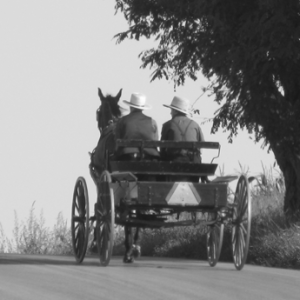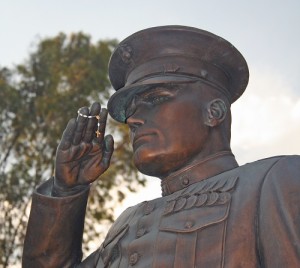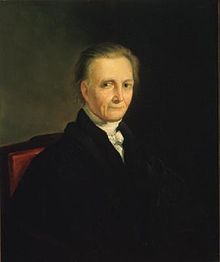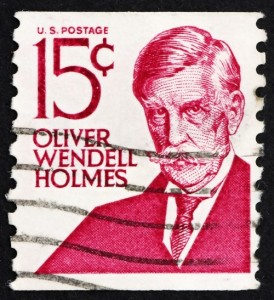Menu
Hot-Topics
May 17, 2022 | SCOTUS Wraps Up Oral Arguments for the Term
Category: Historical

Wisconsin v. Yoder: Compulsory Education Violates First Amendment
In Wisconsin v. Yoder, 406 U.S. 205 (1972), the U.S. Supreme Court held that a Wisconsin law mandating that children attend school violated the First Amendment. In the landmark decision, the unanimous Court held that the parents’ Freedom of Religio...

Mapp v. Ohio: Use of Evidence Under the 4th Amendment
In Mapp v. Ohio, 367 US 643 (1961), the U.S. Supreme Court ruled that evidence obtained through a search in violation of the Fourth Amendment could not be used as evidence in a state criminal case. The decision relied on the doctrine of selective inc...

Korematsu v. United States: National Security Outweighs Individual Rights
In Korematsu v. United States, 323 U.S. 214 (1944), the U.S. Supreme Court upheld an Executive Order that banned American citizens of Japanese descent from certain areas in the name of national security. The case was just one of several lawsuits c...

Washington v. Davis: Discriminatory Purpose & Effect
In Washington v. Davis, 426 U.S. 229 (1976), the U.S. Supreme Court established that racially discriminatory laws are only unconstitutional if they have both a discriminatory purpose and a discriminatory impact. As explained by Justice Byron White...

Buckley v. Valeo: Campaign Finance Laws and the First Amendment
In Buckley v. Valeo, 424 U.S. 1(1976), the U.S. Supreme Court held that while campaign contribution limits implicate First Amendment interests, they withstand constitutional scrutiny so long as they are closely drawn to serve a sufficiently impor...

Charming Betsy and the Law of Nations
In Murray v. Schooner Charming Betsy 6 U.S.64, 2 L.Ed.208 (1804), Chief Justice John Marshall stated that “an act of Congress ought never to be construed to violate the law of nations if any other possible construction remains.” This early Su...

Talbot v. Seeman: The Power to Declare War
In Talbot v. Seeman, 5 U.S. 1 (1801), the U.S. Supreme Court considered the circumstances under which salvage rights attach to a neutral vessel, captured by enemy forces, and then recaptured by the United States Navy. The Court’s decision, which ...

Barron ex rel. Tiernan v. Mayor of Baltimore: The Limits of the Bill of Rights
In Barron ex rel. Tiernan v. Mayor of Baltimore, 7 Pet. 243 (1833), the U.S. Supreme Court held that the Bill of Rights placed limits on the national government and not on state governments. The Court, in an opinion written by Chief Justice John ...

Corfield v. Coryell: The Privileges and Immunities Clause
In Corfield v. Coryell, 6 F. Cas. 546 (1823), Supreme Court Justice Bushrod Washington interprets the Privileges and Immunities Clause of Article 4, Section 2 and articulates a list of fundamental rights guaranteed by the U.S. Constitution. Al...

Abrams v. United States: The Dissent that Shaped Free Speech
Justice Oliver Wendell Holmes’ dissent in Abrams v. United States 250 U.S. 616 (1919) is widely regarded as one of the most famous dissents in the history of the U.S. Supreme Court. It sowed the seeds for the modern interpretation of freedom of...
Previous Articles
SCOTUS Wraps Up Oral Arguments for the Term
by DONALD SCARINCI on May 17, 2022
The U.S. Supreme Court has concluded its oral arguments for the October 2021 Term. The justices hea...
SCOTUS Rules Censure of Elected Board Member Didn’t Violate First Amendment
by DONALD SCARINCI on May 10, 2022
In Houston Community College System v. Wilson, 595 U.S. ____ (2022), the U.S. Supreme Court held th...
Supreme Court Breach Is Not the First Involving Roe v. Wade
by DONALD SCARINCI on
The recent disclosure of Justice Samuel Alito’s decision purporting to overturn Roe v. Wade is ar...
The Amendments
-
Amendment1
- Establishment ClauseFree Exercise Clause
- Freedom of Speech
- Freedoms of Press
- Freedom of Assembly, and Petitition
-
Amendment2
- The Right to Bear Arms
-
Amendment4
- Unreasonable Searches and Seizures
-
Amendment5
- Due Process
- Eminent Domain
- Rights of Criminal Defendants
Preamble to the Bill of Rights
Congress of the United States begun and held at the City of New-York, on Wednesday the fourth of March, one thousand seven hundred and eighty nine.
THE Conventions of a number of the States, having at the time of their adopting the Constitution, expressed a desire, in order to prevent misconstruction or abuse of its powers, that further declaratory and restrictive clauses should be added: And as extending the ground of public confidence in the Government, will best ensure the beneficent ends of its institution.
Awards




